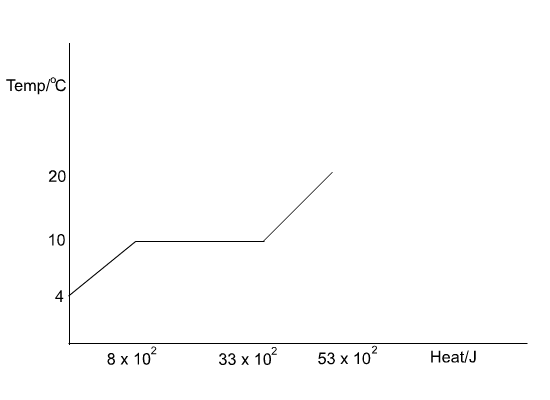
Physics Questions and Answers
If you want to learn more about the nature and properties of matter and energy or you're simply preparing for a Physics exam, these Physics past questions and answers are ideal for you.

If you want to learn more about the nature and properties of matter and energy or you're simply preparing for a Physics exam, these Physics past questions and answers are ideal for you.

0.4cms\(^{-1}\)
2.5cms\(^{-1}\)
10.0cms\(^{-1}\)
10.8cms\(^{-1}\)
Correct answer is C
Velocity = frequency x wavelength
v = 18cm/s, wavelength = 3.6cm, then F = 5hertz
therefore, the speed of the wave in the shallow water = 5 x 2 = 10cm/s
NOTE; as a general rule, the frequency of a wave remains constant while speed and wavelength change as it travels from one medium to another.
moon is larger in diameter than the earth
eath is larger in diameter than the sun
earth revolves around the sun
earth is larger in diameter than the moon.
Correct answer is C
No explanation has been provided for this answer.
50.0\(\Omega\)
450.5 \(\Omega\)
195.0 \(\Omega\)
1950.1 \(\Omega\)
Correct answer is C
The impedance of a R-L circuit is given by:
Z = √(R\(^2\) + XL\(^2\)) ----------- eqn(1)
where Z is the impedance,
R is the resistance, and
XL is the inductive reactance
XL = 2πfL ------------ eqn(2)
where f is the frequency
From eqn(2),
XL = 2 * π * 60 * 0.5
= 60π
Also, from eqn(1),
Z = √(50\(^2\) + (60π)\(^2\))
Z = 195.0Ω
In the hydraulic press, the force F applied is related to the diameter d of the cylinder by
F \(\alpha\) d\(^2\)
F \(\alpha\) d
F \(\alpha\) d\(^{-1}\)
F \(\alpha\) d\(^{-2}\)
Correct answer is A
No explanation has been provided for this answer.
2.25 x 10\(^6\) J kg\(^{-1}\)
4.17 x 10\(^3\) J kg\(^{-1}\)
2.00 x 10\(^3\) J kg\(^{-1}\)
1.00 x 10\(^3\) J kg\(^{-1}\)
Correct answer is D
No explanation has been provided for this answer.